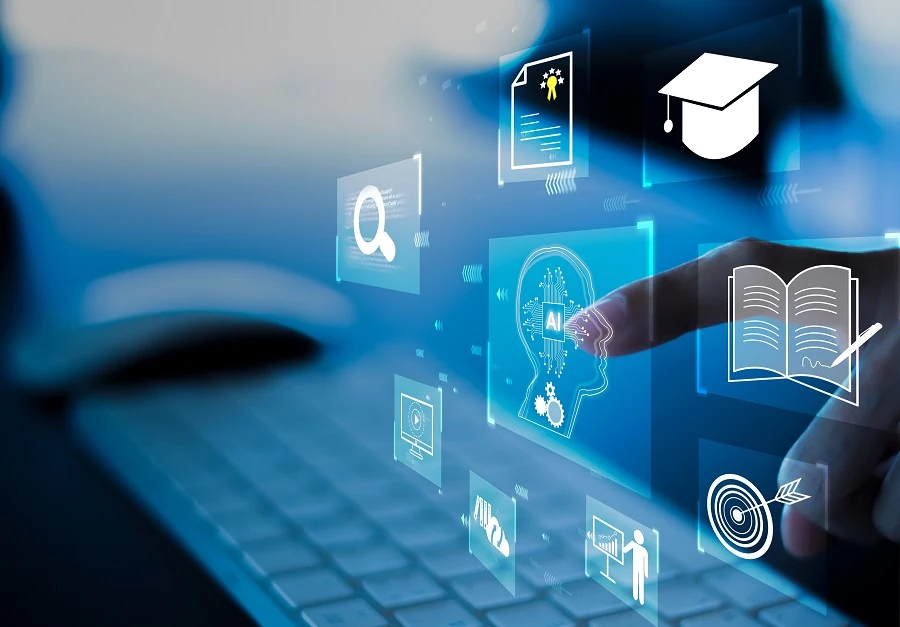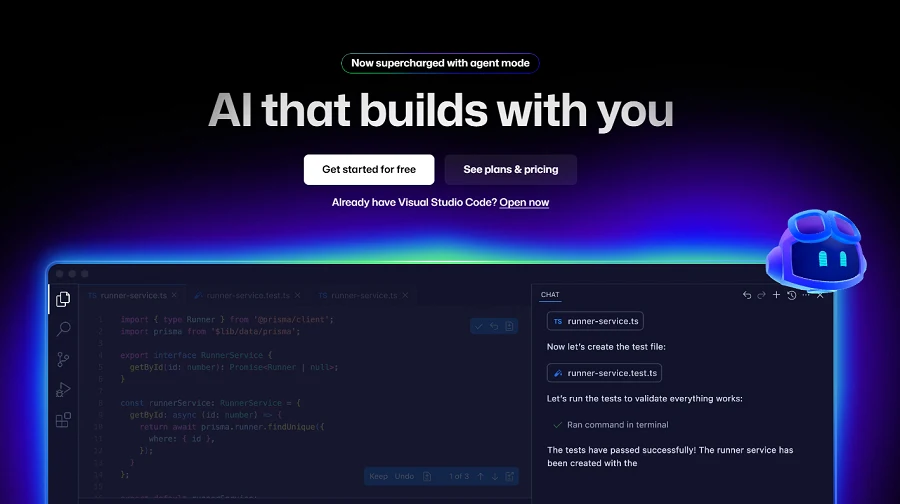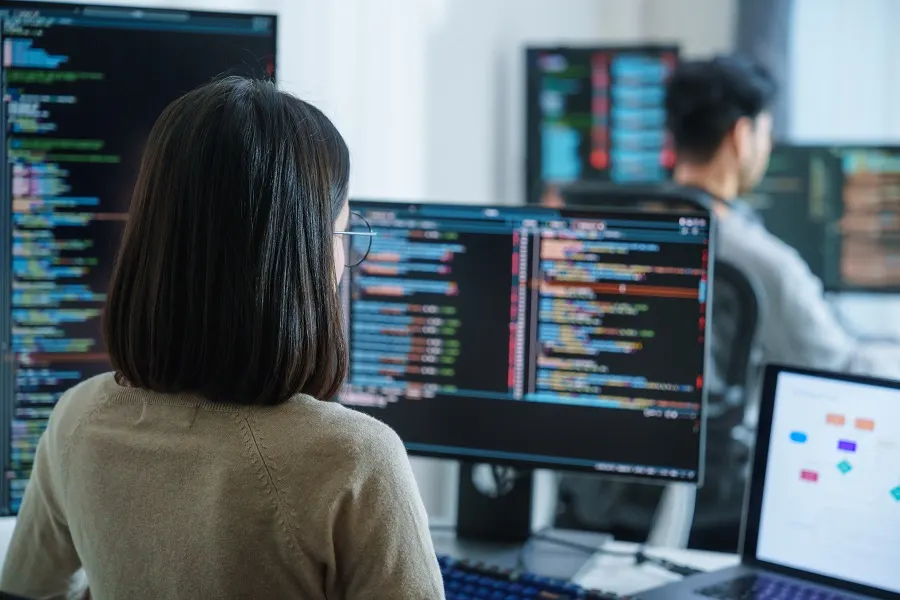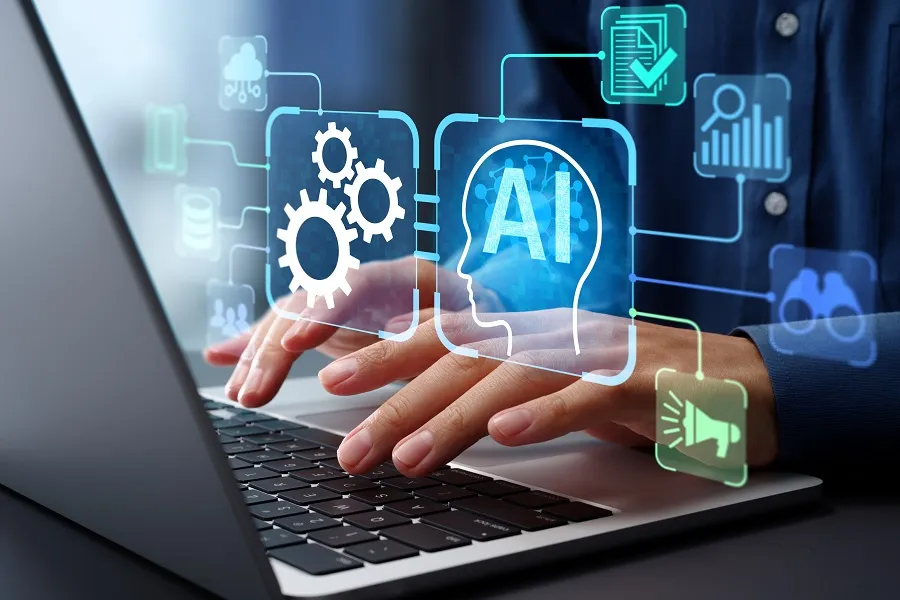AI in the Workplace: Pros and Cons
Artificial intelligence (AI) is no longer a sci-fi concept but an ongoing presence within workplaces today. Uptake of AI tools has seen remarkable growth, with everything from automating emails to coding and predictive analytics now relying on them.
According to one study, 20-40% of workers use AI tools in some capacity, and this number is expected to explode in the years to come. But harnessing its potential means knowing when and how to deploy it.
At Mojo Trek, we support businesses like yours in harnessing AI in the workplace by acting as a bridge for teams looking to tap into onshore and offshore AI experts within their work setups. The fact is, AI development is here, but it needs a professional touch to embrace the potential and mitigate the risks.
Real Benefits of AI in Workplaces
AI is fast becoming the most valuable asset in the modern workplace. In two short years, AI has replaced countless legacy workflows. Despite concerns about the future of AI and its impact on society as a whole, 45% of employees in a Gallup survey said AI had improved both their productivity and efficiency.
AI has the potential to be as transformative as the invention of the wheel, the Industrial Revolution, and the coming of the Internet. According to one estimate, AI could increase corporate profits by up to $4.4 trillion a year.
So, what benefits are appearing in workplaces today?

Supercharging Productivity with AI Assistance
AI brings with it enormous productivity increases by automating and accelerating day-to-day tasks. According to MIT Sloan, generative AI could drive a highly skilled worker’s productivity and output by more than 40%, compared to similar workers who don’t use it.
It’s why McKinsey has highlighted the role of the superagency, a concept initially described in Manas Al Reid Hoffman’s book Superagency – What Could Possibly Go Right with Our AI Future. The idea behind the superagency is not to replace humans with AI but to work in perfect harmony with AI and humans.
These agencies of millions come together to complete tasks in minutes (or even seconds) that would otherwise take hours.
We’re already seeing this on a smaller scale, with AI performing tasks like:
- Auto-scheduling meetings
- Transcribing voice notes
- GPT-powered writing assistance
- Image generation
- Video generation
Enhancing Decision-Making with Predictive Analytics
Intelligent decision-making is data-based, but data means nothing unless it can be interpreted and extrapolated to point teams in the right direction. Democratization of data has long been the gold standard of decision-making, and AI is driving that forward.
According to Google, 84% of decision-makers said that generative AI would allow their organizations to access more insights and quicken decision-making. McKinsey also noted that existing workplace systems already rely on next-generation machine learning algorithms to provide predictive insights to employees at every level.
AI-powered dashboards can do everything from forecasting which products may spike in popularity, helping customer support teams to predict potential issues, and anticipating churn via engagement signals.
Unlocking Employee Creativity and Innovation
The creative sphere already empowers employees to wield innovation and deploy new ideas, driving evolution faster than ever.
Brainstorming assistants, including Magic Write from Canva and Notion AI, are helping creatives and non-designers and non-writers develop ideas, visual graphics, and prototypes. Despite this demolition of technical barriers, a Nature study found that this is one area yet to reach its potential, with leaders falling behind on this expansion of creativity.
Skill Acceleration Through Intelligent Learning

Upskilling achieves the latent potential of your team and supports career development, thus improving employee retention rates. Based on the findings from one poll, just 26% of employees said their companies encouraged them to learn new skills.
AI is accelerating upskilling across the board. For example, GitHub Copilot is powered by OpenAI Codex. It helps developers write and debug in real-time, thus improving code quality and reducing learning curves.
The superagency model also highlights the benefits of AI-powered upskilling, with workers learning faster and gaining confidence faster than non-AI users. Whether through AI-powered onboarding, adaptive learning platforms, or AI assistants, active and passive learning tools are fast closing those skills gaps.
Looking to Integrate AI with Confidence?
Mojo Trek helps companies build and scale teams skilled in responsible AI deployment.
The Downside of AI
Like anything, AI isn’t perfect, and it comes with brand-new challenges for organizations trying to infuse AI tools into their processes. Innovators must be aware of the downsides they’ll face to avoid solving one problem but creating vulnerabilities elsewhere.
So, what are the main downsides of AI?
Ethical and Bias-Related Concerns
AI systems are increasingly being used to identify new talent. According to one survey, 42% of companies use it to improve recruitment. However, accusations of bias have dogged these tools.
A peer-reviewed article entitled the Potential and Peril of AI in HRM found that these tools may perpetuate structural bias without regular monitoring. In other words, they use inequitable historical data to favor certain demographics.
Additionally, relying on algorithms to make decisions in this way creates what’s known as the “black box” problem, where employers can’t dig into how decisions are made. Inevitably, this can lead to unfair hiring practices and all the legal and ethical complications that come with it.
Privacy, Surveillance, and Trust Issues
Employers want as much insight into what their teams are doing as possible. Monitoring tools are nothing new, but AI tools are becoming increasingly common. A Pew Research Center survey found that 37% of people had read or heard about businesses using these tools to monitor employees.
Tracking at this level can be frustrating for employees, with New Horizons noting that it raises big questions about privacy and trust issues. While these tools are designed for productivity, they can also break the trust between bosses and their teams.
Are employees onboard with these surveillance tools? So far, the answer is no. A CNBC report found that 45% of workers said they were damaging to their mental health.

Job Displacement and Workforce Disruption
Job displacement is often the biggest worry, and it’s a legitimate concern. The aforementioned Nature study highlighted that although innovation will grow in some sectors, it could cost jobs elsewhere, especially among mid-skilled workers. According to a Goldman Sachs analysis, they estimate up to 300 million jobs are at risk of being lost or degraded globally.
It’s the type of uncertainty that should be driving reskilling and upskilling. Companies that bury their heads on this issue risk not just losing their talent but also creating a culture of resistance when it comes to AI.
Integration, Governance, and Skill Gaps
The superagency framework described by McKinsey also raises another issue. The fact is, many executives just don’t have the skills or understanding to control and manage AI deployment. These knowledge gaps and an inability to rework governance frameworks mean that AI tools never come in or are just bolted onto legacy systems.
It's these gaps that mean many companies will need to connect with AI professionals to do the work of deployment or risk falling behind the competition.
Best Practices for Responsible AI Adoption
Talking about AI adoption from a theoretical standpoint is very different from actually going through the process. Ensuring that AI tools are deployed to maximum effect is essential, but responsible adoption means preventing the downsides from arising in the first place.
Here are the top proactive practices for bringing AI into the fold.
Start with Inclusive, Ethical AI Governance
Governance is your guiding light for monitoring AI systems and anticipating problems. Conduct an ethical audit, explicitly focusing on Diversity, Equity, and Inclusion (DEI), and integrate the results into your model training.
Make bias testing part and parcel of your AI strategy, including post-deployment. This helps you reflect the diversity of your team and employees, helping you stick to your legal responsibilities and values.
Invest in AI-Aware L&D and Cultural Readiness
McKinsey’s analysis of the superagency found that one of the risks is the readiness gap between employees and executives who are eagerly embracing an AI future and those who are hesitating. It all starts with boosting AI literacy and committing to Learning & Development (L&D) programs.

These programs should include modules to boost:
- Data ethics
- AI fluency
- Change management
- Trust in AI
Launch Pilot Programs, Not Full-Scale Deployments
Don’t go all-in at the start. Start with pilot programs, focusing on small-scale deployment using a single team or department. These tests allow you to track the impact and incorporate employee feedback in anticipation of a complete rollout.
Choose a lower-risk environment, so that any teething problems that do emerge don’t cause serious disruption to your day-to-day operations.
Maintain Human Oversight with Augmented Roles
Focus not on replacing humans but on enhancing them. Tightening the leash on AI ensures that accountability and responsibility aren’t outsourced to an algorithm.
Think about augmented roles to empower employees by helping them to upskill and improve their performance. Of course, some roles will naturally be phased out, but don’t jump on the idea of firing half your organization and replacing them with an AI platform.
Implement Strong Privacy and Consent Protocols
Address the elephant in the room to avoid your employees resisting AI adoption or outright revolting against it by showing how you manage data and the controls they have over it. This goes doubly if you’re thinking about deploying AI-based surveillance tools. Having an open conversation with your team at the earliest stages is crucial for getting their buy-in.
Likewise, you may even want to think about adopting privacy-first policies and AI consent agreements to ensure the relationship between you and your team stays strong.
Integrate AI Without Risking Productivity
Want to embrace AI but unsure where to start? Mojo Trek connects you with skilled AI developers who can elevate your workflows.
(872) 895-79552025-07-24
Frequently Asked Questions
Will AI replace human workers completely?
No, AI works best when it’s used to augment human workers, rather than replace them. Some roles will be lost, but that doesn’t mean existing workers cannot be upskilled and retrained to serve functions in adaptability, creativity, and critical thinking elsewhere.
How can AI be adopted without overwhelming my employees?
The best way to adopt AI is to start with small test groups. Deploy in a low-risk environment, track the results, and discuss with your team what went right and what went wrong. Only when you’ve got it right should you roll AI out across your entire firm.
Does AI limit employee creativity?
No, AI accelerates the creative process. Employees are free to design, test, and prototype while AI handles all the finicky tasks that would otherwise take hours. It means innovation at a pace never before seen by breaking down manual tasks and technical barriers.






.webp)
.svg)


